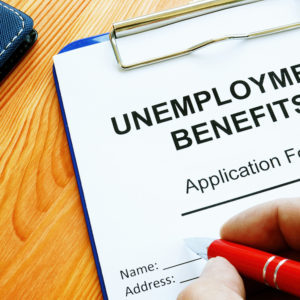Delaware Valley legislators say that, while the state’s handling of unemployment claims has improved over last spring’s fiasco, problems still remain in the system. More than two million unemployment claims were filed last March across the state. In June, 15 percent of them remained unpaid.
“There are still people who are having issues, it’s not to the extent it was in the past, but it does seem to be a lot better streamlined,” said Representative Joe Ciresi, a Democrat who represents the 146th District of Montgomery County.
Representative Todd Stephens added the system is working better following the tremendous volumes in the early days of the crisis. Stephens, a Republican, represents the 151st District, also in Montgomery County.
“We’re getting things resolved within weeks, rather than within months,” Stephens said.
One reason for the improvement is the decline in demand. As the COVID lockdowns hit the Delaware Valley economy, analysts said it was “worse than the Great Recession.” The region hasn’t fully recovered, but the worst is over — for now.
“Pennsylvania’s unemployment rate was down 0.1 percentage points over the month to 6.7 percent in December, the eighth consecutive monthly decline,” the Pennsylvania Department of Labor and Industry said Friday. “The U.S. rate remained unchanged from November at 6.7 percent. The commonwealth’s unemployment rate was 2.1 percentage points above its December 2019 level while the national rate was up 3.1 points over the year.”
Residents often took to social media to express their frustration with the unemployment process, describing long hold times, disconnected calls and struggling to navigate their way through the PA unemployment portal. Elected officials said that since March, they have directly been working with hundreds to thousands of their constituents to ensure their benefits are secured.
In late December, just as unemployment benefits were expiring, former President Trump signed the Consolidated Appropriations Act of 2021, extending the federal unemployment assistance benefits at $300 per week. Still, unemployment insurance filers are struggling to obtain their benefits, as new levels of verification were included in the process to protect against fraud.
Pennsylvania officials also agreed to participate in the newly instated Mixed Earner Unemployment Compensation, MECU, insuring self-employed workers and offering an additional $100 per week.
“Compounding that was the lengthy inability to come to a compromise in Washington on the latest COVID stimulus package. Programs such as [Pandemic Unemployment Assistance] were not able to be updated until legislation was passed and signed and unfortunately that didn’t happen until the previous program passed in March had lapsed,” Rep. Dan Williams (D-Chester County) said.
Williams’ chief of staff, Bill Schoell, said most of the issues the office saw were related to the Pandemic Unemployment Assistance [(PAU), with many of the problems actually coming after the program shut down.
“For the most part, the system seems to be running more smoothly than it was in March and the spring, other than the PUA shutdown and programming. However, another component of this problem is that new applicants can’t begin the PUA process until updates are completed,” Schoell said.
Another issue delaying benefit retrieval could be linked to the age of the unemployment computer system. Rep. Williams said the Pennsylvania unemployment application process is over 40 years old and was not equipped to handle an avalanche of new applications.
Reps. Ciresi, Stephens and Williams commended their staff and offices for the work they have done with constituents across the state to assist with their unemployment insurance applications.
“We have helped 1,800 people so far from all over the Commonwealth,” Ciersi said. “We had to stop and just help people in our district because we were getting so many calls out of our district. At one point, we were helping people from six or seven different states.”

